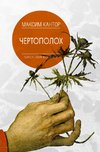
-
 Anglický jazyk
Anglický jazyk
Natural history of the Mojave Desert
Autor: Source: Wikipedia
Source: Wikipedia. Pages: 62. Chapters: 1872 Lone Pine earthquake, Amargosa Chaos, Amargosa Desert, Amboy Crater, Amsinckia vernicosa, Arctomecon californica, Argemone corymbosa, Astragalus cimae, Astragalus jaegerianus, Astragalus layneae, Astragalus mohavensis,... Viac o knihe
Na objednávku
19.53 €
bežná cena: 21.70 €
O knihe
Source: Wikipedia. Pages: 62. Chapters: 1872 Lone Pine earthquake, Amargosa Chaos, Amargosa Desert, Amboy Crater, Amsinckia vernicosa, Arctomecon californica, Argemone corymbosa, Astragalus cimae, Astragalus jaegerianus, Astragalus layneae, Astragalus mohavensis, Astragalus nutans, Astragalus panamintensis, Astragalus tricarinatus, Camissonia strigulosa, Chaenactis fremontii, Chaenactis xantiana, Cheilanthes parryi, Chorizanthe brevicornu, Cima Dome & Volcanic Field National Natural Landmark, Clark Mountain (California), Collinsia callosa, Coreopsis calliopsidea, Coyote Lake (San Bernardino County, California), Cucurbita palmata, Death Valley Fault Zone, Deinandra mohavensis, Delphinium parishii, Desert Discovery Center, Desert tortoise, Echinocactus polycephalus, Encelia farinosa, Enceliopsis covillei, Eriogonum angulosum, Eriogonum hoffmannii, Eriogonum mohavense, Eriogonum rixfordii, Eschscholzia minutiflora, Fagonia laevis, Fish Slough Area of Critical Environmental Concern, Furnace Creek Fault Zone, Garlock Fault, Geology of the Death Valley area, Ipomopsis arizonica, Juncus macrophyllus, Kernite, King Clone, Lake Manix, Lake Manly, Las Vegas Wash, Lavic Lake volcanic field, Lupinus excubitus, Lupinus odoratus, Lupinus sparsiflorus, Madrean Region, Mahonia haematocarpa, Malapai Hill, Mentzelia eremophila, Mentzelia nitens, Mentzelia reflexa, Mimulus mohavensis, Mohavea confertiflora, Mojave River, Monardella robisonii, Muhlenbergia asperifolia, Nitrophila mohavensis, Old Woman meteorite, Penstemon palmeri, Perityle emoryi, Phacelia calthifolia, Phacelia campanularia, Phacelia longipes, Phacelia nashiana, Pisgah Crater, Prunus fasciculata, Psorothamnus arborescens, Racetrack Playa, Saltugilia australis, Single-leaf Pinyon, Sphaeralcea ambigua, Sporobolus airoides, The Grandstand, Trichoptilium, Trixis californica, Yucca brevifolia, Yucca schidigera. Excerpt: The exposed geology of the Death Valley area presents a diverse and complex set of at least 23 formations of sedimentary units, two major gaps in the geologic record called unconformities, and at least one distinct set of related formations geologists call a group. The oldest rocks in the area that now includes Death Valley National Park are extensively metamorphosed by intense heat and pressure and are at least 1700 million years old. These rocks were intruded by a mass of granite 1400 Ma (million years ago) and later uplifted and exposed to nearly 500 million years of erosion. Marine deposition occurred 1200 to 800 Ma, creating thick sequences of conglomerate, mudstone, and carbonate rock topped by stromatolites, and possibly glacial deposits from the hypothesized Snowball Earth event. Rifting thinned huge roughly linear parts of the supercontinent Rodinia enough to allow sea water to invade and divide its landmass into component continents separated by narrow straits. A passive margin developed on the edges of these new seas in the Death Valley region. Carbonate banks formed on this part of the two margins only to be subsided as the continental crust thinned until it broke, giving birth to a new ocean basin. An accretion wedge of clastic sediment then started to accumulate at the base of the submerged precipice, entombing the region's first known fossils of complex life. These sandy mudflats gave way about 550 Ma to a carbonate platform which lasted for the next 300 million years of Paleozoic time. The passive margin switched to active margin in the early-to-mid Mesozoic when...
- Vydavateľstvo: Books LLC, Reference Series
- Rok vydania: 2019
- Formát: Paperback
- Rozmer: 246 x 189 mm
- Jazyk: Anglický jazyk
- ISBN: 9781233137893







 Ruský jazyk
Ruský jazyk 



 Nemecký jazyk
Nemecký jazyk 
